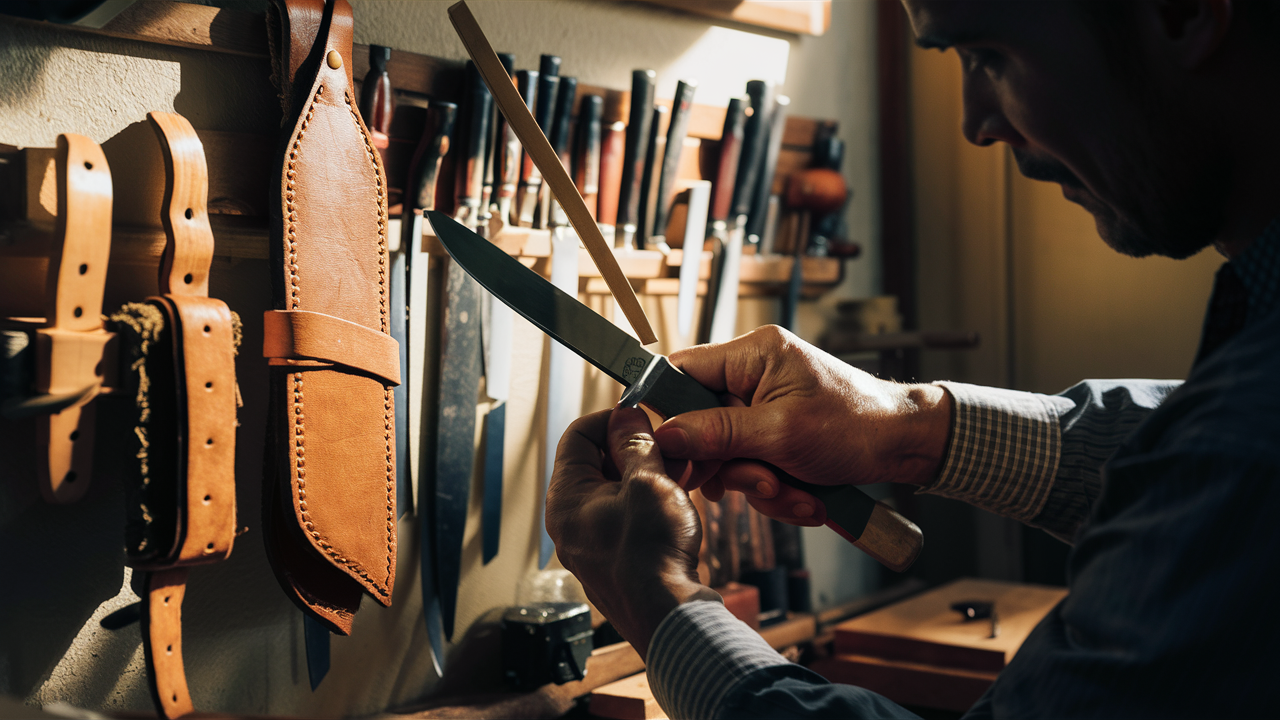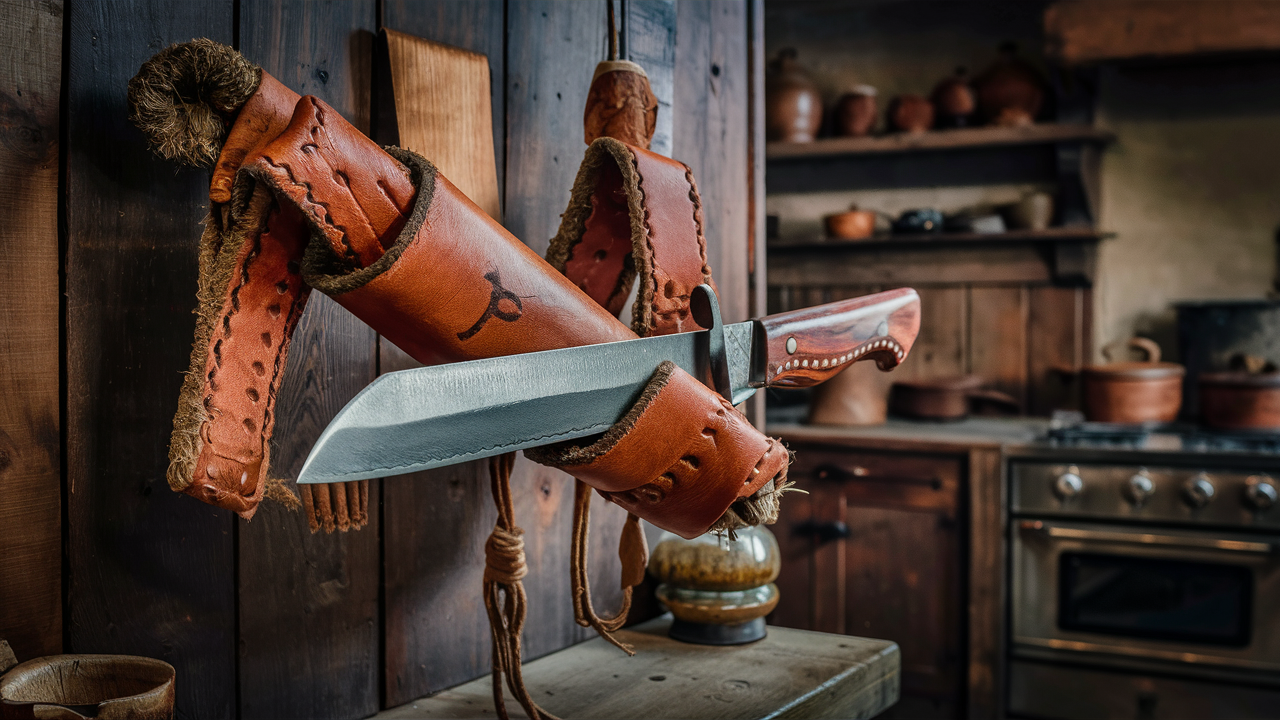Learn The Art of Leather Stropping Your Knife
Leather honing a knife is a polishing technique to refine and polish the blade’s aspect. It involves using a leather-based strop, generally loaded with a polishing compound, to softly realign and clean out the microscopic burrs and imperfections on the edge of the blade. This technique produces a sharper, more polished edge, improving the knife’s slicing and overall performance. Let’s dive in to learn step-by-step how to leather strop a knife.
Sharpened The Knife First
Before honing a knife with leather-based honing, it is vital to ensure the blade is nicely sharpened. Stropping is a finishing step inside the polishing system, so the knife must already have a reasonably sharp facet. If the blade is stupid or has nicks or chips, it’s critical to cope with the issues via sprucing on a whetstone or sprucing device earlier than intended leather stropping. To learn in detail how to sharpen your dull knife, click here.

Five Simple Steps to Leather Strop A knife
Step 1: Gather Your Supplies
Before you dive into the world of leather-based stropping, make sure you’ve got everything you want. You’ll need a knife, a leather-based strop, and some sharpening compound. Think of it as collecting your ingredients earlier than cooking up a scrumptious meal!
Step 2: Prep Your Strop
Now that you’ve been given your equipment collectively, it’s time to prepare your leather strop for motion. Make certain it is securely fastened to a flat surface, like a desk or workbench. Then, take a small quantity of sprucing compound and unfold it evenly across the leather-based surface. Don’t go overboard—a bit dab will do!
Step 3: Find the Right Angle
Hold your knife at a steady perspective – generally around 15 to 20 ranges. This component might take a piece of exercise but don’t worry if you don’t get it right on the primary try. The key is to keep that perspective constant at some point of the stropping manner.
Step four: Start Stropping
With the blade’s part facing away from you, lightly drag the knife throughout the strop in clean, managed strokes. Think of it like giving your blade a pleasant, enjoyable massage. Remember to trade aspects regularly to keep things fine and even.
Step five: Test Your Edge
Give your knife a touch check run after a few passes on each facet. You ought to note the brink getting sharper and smoother with each stroke. If it’s no longer pretty there yet, no concerns! Just hold stropping until you are happy with the results.

Maintenance of Knife after leather stropping
After leather-based stropping your knife to razor-sharp perfection, it’s vital to hold its edge to extend its sharpness and effectiveness. Here’s how to do it:
- After honing, clean the blade with a dry fabric to eliminate any residue or particles. This prevents any unwanted materials from transferring to your food while you use the knife.
- Store your knife in a safe and dry location, preferably in a knife block or sheath to protect the edge from damage and to ensure it stays sharp for longer intervals.
- Even with everyday stropping, the blade will lose its part over time with use. To preserve its sharpness, use a honing metal or ceramic rod to realign the threshold among stropping classes. Run the blade alongside the metal at a steady perspective on each aspect.
- Depending on your knife’s usage frequency, you may need to re-strop it periodically to keep its sharpness.
- While a sharp knife is versatile, avoiding reducing it on hard surfaces like glass, stone, or steel is critical, as this may stack quickly. Stick to softer reducing boards, together with wood or plastic, to maintain the sharpness of your knife.
- Periodically smooth the strop with a brush or material to remove any residue, and if necessary, reapply a thin layer of compound to ensure the greatest stropping performance.
By following these renovation guidelines, you can preserve your sharpened knife in top condition, ensuring it remains sharp and ready for any cutting challenge you throw its way.
